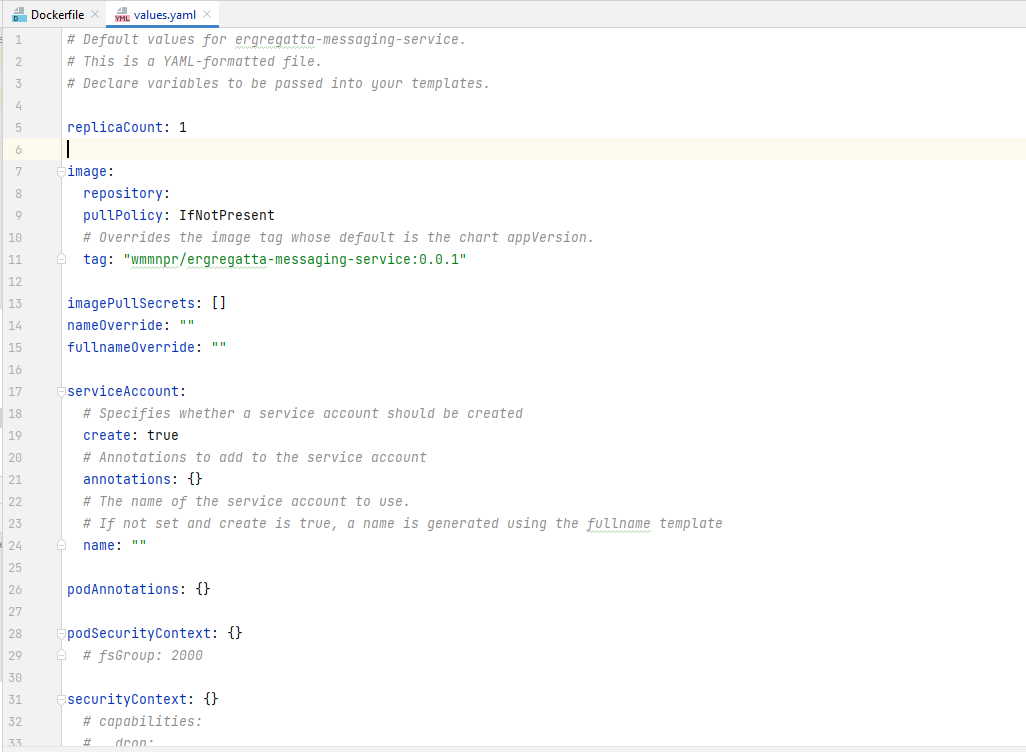What follows is a description of how to deploy a Springboot websocket microservice to a Kubernetes cluster running in Docker-Desktop. The prerequisites for the deployment are:
- The Springboot app has been dockerized
- Docker-Desktop (4.4.3) has been installed and Kubernetes (v1.22.5) enabled.
- kubectl (v1.22.5) has been configured to connected to k8 cluster started with Docker-Desktop
- Helm(v3.8.0) has been installed.
Create a subfolder in the Springboot project directory called helm. Below one see the result in Intellij and the contents of the simple Dockefile as well.
>helm create name-of-project //here ergregatta-messaging-service
The Helm Chart Template Guild is a good place to learn about contents of the generated folder.
In the values.yaml file in the newly generated folder there were only a few things that had to be changed. The first and most obvious one being the "image.tag", shown below. It was set to point to the image in my local Docker image repository which came as a result of running docker build command.
Other changes, included, setting "ingress.enabled" to true and setting the "ingress.className" to "nginx". Which brings us to the next step. Before deploying the microservice, one must deploy an ingress controller, which in this case was ingress-nginx. The helm command to do so was:
>helm install ingress-nginx ingress-nginx --repo https://kubernetes.github.io/ingress-nginx --namespace ingress-nginx --create-namespace
I also had to change the targetPort in the service.yaml file to match that of the port configured in the Dockerfile.
Also the hostname at which the microservice (k8 service) will be available to the outside needs to be configured in the values.yaml. The value in this case was:
ingress.hosts.host: rowwithme
However, the hostname will only function properly if one, on Windows, adds it to the C:\Windows\System32\drivers\etc\hosts file. As in:
127.0.0.1 rowwithme
Now, deploy the microservice by running:
>helm install rowwithme ergregatta-messaging-servic
Ok, maybe I should have used wscat but with the above screenshot one can see that the request is being forwarded to microservice running the the pod listening on port 5000
With kubectl once can see that ingress mapping has been processed by the ingress controller because othe the "HOSTS" column show below.





No comments:
Post a Comment